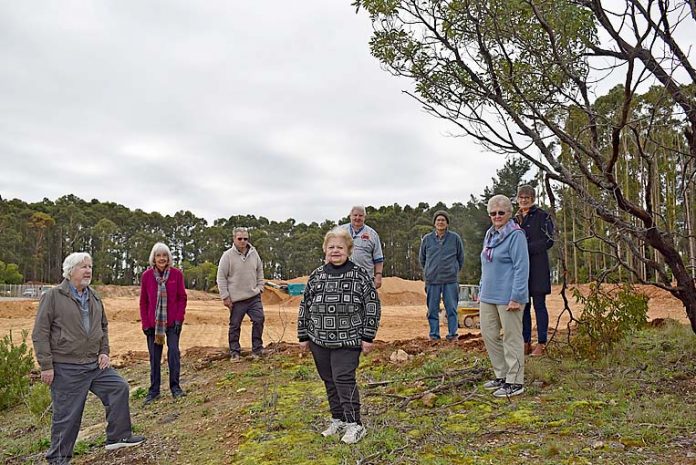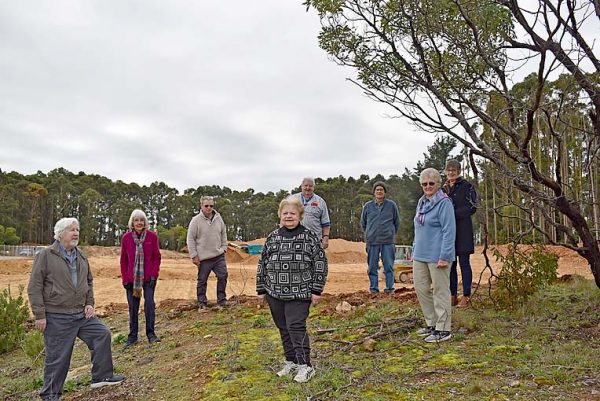

MILLICENT historians are taking a keen interest in the current once in-a-generation expansion of the local cemetery.
Contractors engaged by Wattle Range Council are creating enough space to house a further 1200 graves and this will meet the anticipated burial needs of the local community until around 2055.
Extra burial space will be needed in about 18 months from now.
Members of the South East History Group gathered at the cemetery on Mount Gambier Road yesterday to view the heavy machinery at work.
History group members are regular visitors to the Millicent cemetery as they hold monthly working bees to voluntarily restore graves and tombstones.
The historians also placed markers on the graves of two returned soldiers in 2019 and frequently use the data recorded on the graves to help researchers.
History group president Noel Boyle said the first local cemetery dated back to the early 1870s and was located near the current-day Millicent and District Hospital.
Mr Boyle said the current cemetery was established in 1877 and was followed by the lawn cemetery in 1974 and the neonatal section in 1988.
He said the Millicent Community Builders and other volunteers created a walled garden around the children’s section in 2000.
“Cemeteries are an important tool for family history research,” Mr Boyle said.
“The information on a headstone is a link with the past and so much information can be gleaned from a headstone.
“With the dates you can look for an obituary in the local newspaper.
“The condition of a cemetery also shows if a town is proud and respects its pioneers.
“People would not be surprised at the number of people who visit a cemetery to pay their respects to close family members but they would be surprised to find out how many visitors from away go to a cemetery to pay their respects to the early pioneer relatives of a district.
“A small band of volunteers and members of the history group hold a working bee on the first Sunday of each month to tidy a number of graves that need a bit of love and care.”
Mr Boyle said members were quite often asked by visitors for information on a particular grave in the older section of the cemetery.
“On Sunday we were approached by two people from Jamestown who we were able to help find the headstones they were looking for from the history group records.”
Wattle Range Council engineering services director Peter Halton said the first stage of the expansion work was expected to be finished within a fortnight.
Mr Halton said council had budgeted $20,000 to undertake the earthworks including clearing the trees and levelling and spreading topsoil to establish the lawn.
He said a large amount of gravel was located which could be used in council roadworks later this year and provide a cost-saving of $20,000.
“The additional works have also resulted in the development of a large all-weather (unsealed) car parking area to the rear of the new burial area,” Mr Halton said.
“This will now provide adequate overflow car parking rather than cars using the shoulder along Mount Gambier Road during larger burial services.
“We anticipate needing additional space for lawn burials by 2022.
“This does not mean the current area will be full at this stage.
“Due to the nature of graves, we stagger the location of burials and allow time for natural compaction or risk grave collapse.
“That is, graves are not dug side-by-side in a sequential order of date.
“Thus, there is the need for the expansion of the site before being full.
“The total area of current lawn cemetery will take approximately three-to-five years to fully fill due to these requirements.”
Mr Halton said the current rates of burial suggested at least 30 years of space is being created with these expansion works.
“However, statistics provided to Wattle Range Council is that more people are choosing to be cremated which will clearly increase the timeframe of available plots in the new area.”







